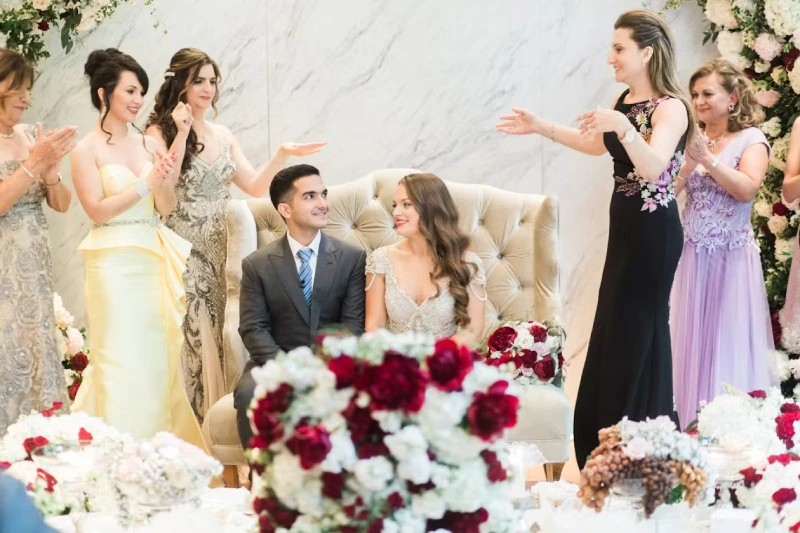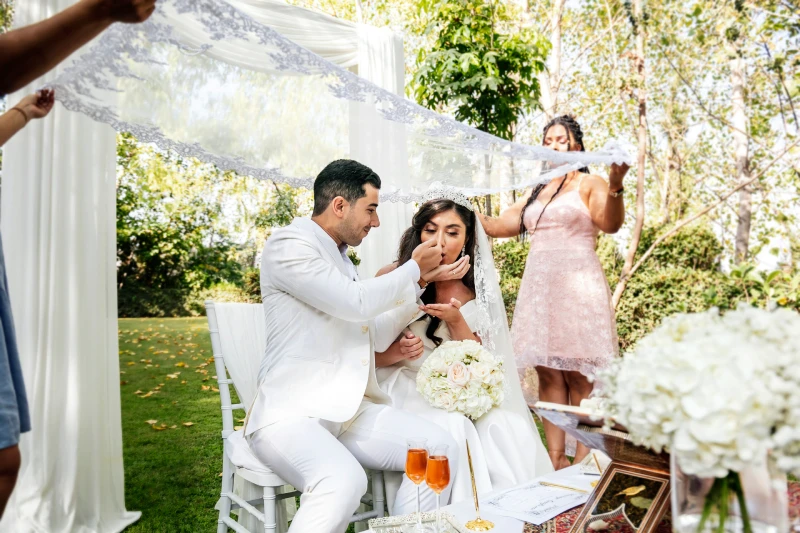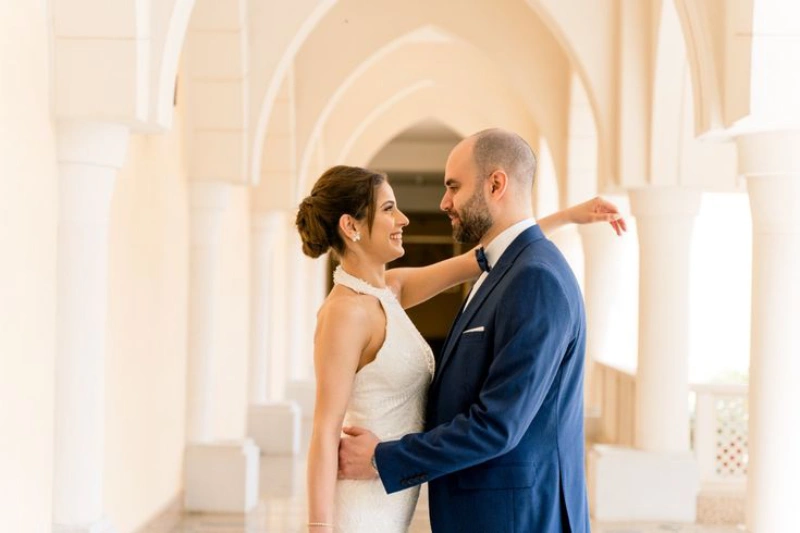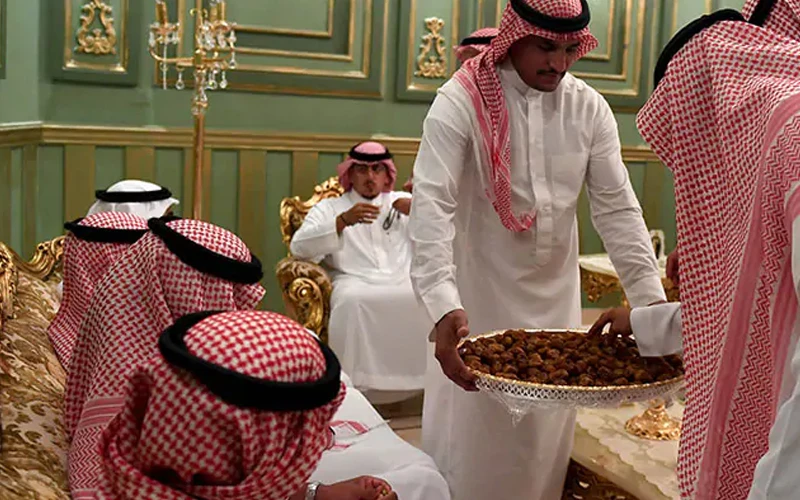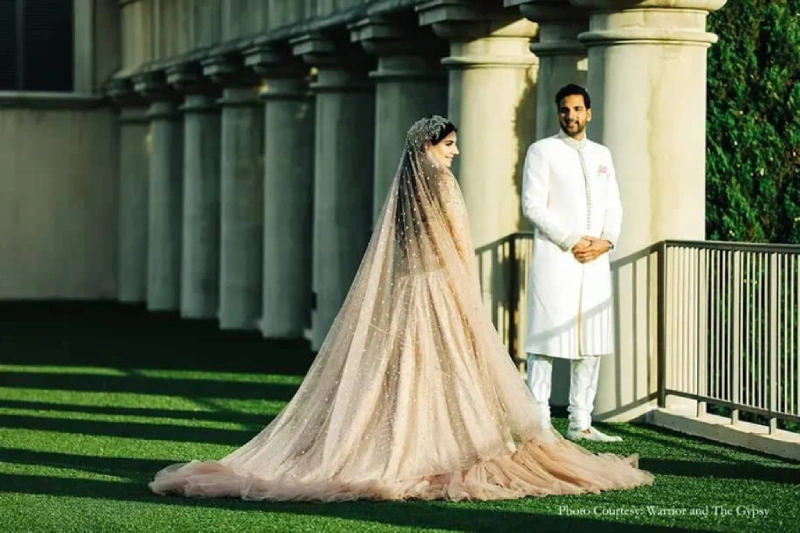Weddings are a spectacular tapestry of culture, tradition, and love, and nowhere is this more evident than in Persian and Arab weddings. While both celebrate the union of two hearts, the customs and traditions that define these ceremonies showcase the rich cultural legacies of their respective societies. From the enchanting rituals to the breathtaking attire, each wedding is a unique reflection of history and values.
In Persian weddings, vibrant displays of artistry and heartfelt ceremonies create an atmosphere filled with joy, often culminating in the mesmerizing “Sofreh Aghd.” Meanwhile, Arab weddings, with their grandiose celebrations and rhythmic music, highlight the importance of family and community through shared experiences and rich culinary delights. Join us as we delve into the fascinating distinctions between these two beautiful ceremonies, unraveling the stories and meanings behind each tradition, and discover what makes them truly special.
Historical and Cultural Background
The cultural richness of Persian and Arab weddings is deeply rooted in centuries-old traditions that reflect the historical evolution of these societies. Persian weddings, influenced by ancient Persian empires and Zoroastrianism, are steeped in rituals that emphasize purity, prosperity, and unity. These ceremonies have evolved over millennia, drawing from the opulence of the Achaemenid and Sassanian eras, incorporating Islamic customs after the Arab conquest, yet retaining a distinct Persian identity that celebrates art, poetry, and family bonds.
In contrast, Arab weddings are a confluence of diverse traditions from various regions within the Arab world, including the Levant, the Arabian Peninsula, North Africa, and the Gulf. The influence of Islam is predominant, shaping the core of marital customs and rites. However, pre-Islamic Bedouin traditions also play a significant role, especially in the emphasis on hospitality, community, and the collective joy of the tribe. These weddings are a testament to the Arab world’s vast cultural tapestry, showcasing regional variations and common threads of shared heritage.
While both Persian and Arab weddings celebrate the union of two individuals, they do so against the backdrop of their unique historical contexts. Persian weddings often highlight a sense of continuity with ancient traditions, blending them seamlessly with modern influences. Arab weddings, on the other hand, may vary significantly from one region to another but generally prioritize communal celebration and adherence to religious practices. This historical and cultural backdrop sets the stage for understanding the distinct pre-wedding, wedding, and post-wedding customs that follow.
Pre-Wedding Traditions and Customs
Pre-wedding traditions in Persian weddings are meticulously planned and involve several stages, each imbued with symbolic meaning. One of the most significant pre-wedding customs is the “Khastegari” or the formal proposal, where the groom’s family visits the bride’s household to seek her hand in marriage. If both families agree, the “Baleh Boroon” ceremony follows, where gifts are exchanged, and the couple’s engagement is officially announced. This period of engagement is marked by preparations for the wedding, including the crafting of the elaborate “Sofreh Aghd,” a ceremonial spread that plays a central role in the wedding.
In Arab weddings, the pre-wedding phase, known as the “Katb Al-Kitab” or marriage contract signing, is of paramount importance. This legal and religious ceremony is attended by close family members and friends, where the marriage contract is signed, and the dowry is agreed upon. This event is often followed by the “Henna Night” or “Laylat Al-Henna,” a joyous gathering where the bride’s hands and feet are adorned with intricate henna designs. This night is filled with music, dance, and traditional songs, symbolizing the bride’s transition from singlehood to marital life.
Both Persian and Arab pre-wedding customs are designed to bring families together, foster unity, and ensure that the couple is well-prepared for their life together. While Persian traditions emphasize artistic expression and family negotiations, Arab customs highlight religious solemnity and communal joy. Despite the differences, the underlying theme in both cultures is the celebration of love, commitment, and the blending of two families into one.
Wedding Ceremony: Key Rituals and Practices
The Persian wedding ceremony, known as “Aghd,” is a heartfelt and elaborate affair centered around the “Sofreh Aghd.” This ceremonial spread is meticulously arranged with symbolic items such as a mirror (symbolizing light and brightness), candles (representing energy and clarity), and spices (to ward off the evil eye). The couple sits before the Sofreh Aghd, facing the mirror, reflecting their unity and future together. During the ceremony, the “Aghd” or marriage vows are exchanged, often recited by a religious or civil officiant. The ceremony may include poetry readings, blessings from family members, and the symbolic act of the bride dipping her pinky finger in honey and feeding it to the groom, signifying sweetness in their marriage.
In Arab weddings, the central wedding ceremony, often called the “Nikah,” is a solemn and spiritually significant event. The Nikah involves the recitation of Quranic verses, the exchange of vows, and the formal consent of both parties, usually conducted by an Imam or religious scholar. The ceremony is witnessed by family and close friends, with the signing of the marriage contract being the focal point. This contract outlines the rights and responsibilities of both parties and includes the dowry agreed upon during the Katb Al-Kitab. The Nikah is followed by prayers and blessings for the couple’s prosperous and harmonious life together.
Both Persian and Arab wedding ceremonies are rich in tradition and symbolism, each reflecting the cultural values and religious beliefs of the respective societies. The Persian Aghd ceremony is characterized by its artistic and poetic elements, while the Arab Nikah is marked by its religious solemnity and communal participation. Despite their differences, both ceremonies underscore the sanctity of marriage, the importance of family, and the joy of uniting two souls in a lifelong partnership.
Attire and Dress Codes: Persian vs. Arab
The attire at Persian weddings is a vibrant display of cultural heritage and personal expression. The bride often wears a traditional white gown, which can range from a simple, elegant dress to an elaborately adorned ensemble with intricate embroidery and beadwork. The groom typically dons a suit, often with a tie or bowtie that complements the bride’s attire. A notable aspect of Persian bridal fashion is the use of ornate jewelry and accessories, including tiaras, necklaces, and bracelets, which add a touch of regal splendor to the overall look. The emphasis on elegance and refinement is evident in every detail, from the fabric choices to the meticulous craftsmanship.
Arab wedding attire, on the other hand, varies significantly across different regions but generally exudes grandeur and opulence. The bride’s dress is often a lavishly decorated gown, featuring rich fabrics like silk, satin, and velvet, adorned with sequins, crystals, and intricate embroidery. In some regions, the bride may wear a traditional “Kaftan” or “Thobe,” which is a long, flowing robe with elaborate designs. The groom’s attire may include a traditional “Dishdasha” or “Thobe” in white or black, often accompanied by a “Bisht,” a cloak that signifies prestige and honor. The couple’s attire is a reflection of cultural pride, with each element carefully chosen to enhance the splendor of the occasion.
Both Persian and Arab wedding attire are deeply symbolic, reflecting the cultural values and aesthetic preferences of their respective societies. Persian wedding fashion emphasizes grace and artistic expression, while Arab wedding attire highlights opulence and traditional elegance. Regardless of the differences, the common thread is the desire to celebrate the union in a manner that honors heritage and showcases the beauty of the couple and their culture.
Food and Cuisine: Culinary Highlights
The culinary delights at Persian weddings are a feast for the senses, featuring a diverse array of traditional dishes that reflect the richness of Persian cuisine. The “Sofreh” or banquet table is laden with an assortment of appetizers, main courses, and desserts, each meticulously prepared to ensure a memorable dining experience. Signature dishes often include “Chelo Kebab,” succulent skewers of grilled meat served with saffron rice; “Fesenjan,” a savory stew made with pomegranate paste and walnuts; and “Sabzi Polow,” herbed rice accompanied by fish or chicken. Desserts like “Baklava” and “Saffron Ice Cream” add a sweet ending to the feast, while “Shirini” (Persian sweets) are served with tea throughout the celebration.
Arab weddings are equally renowned for their sumptuous spreads, showcasing the diversity of Arab cuisine. The culinary journey often begins with an array of “Mezze,” small dishes such as “Hummus,” “Tabbouleh,” “Baba Ghanoush,” and “Stuffed Grape Leaves.” The main course features grand dishes like “Mansaf,” a traditional Jordanian dish of lamb cooked in yogurt and served with rice; “Mandi,” a Yemeni dish of spiced rice and meat; and “Kebsa,” a Saudi Arabian rice dish with meat and vegetables. Desserts such as “Kunafa,” a sweet cheese pastry soaked in syrup, and “Maamoul,” date-filled cookies, are enjoyed alongside strong, aromatic coffee or tea.
Both Persian and Arab wedding feasts are a testament to the importance of food in cultural celebrations, serving as a means to bring people together and create lasting memories. Persian cuisine emphasizes intricate flavors and artistic presentation, while Arab cuisine is characterized by generous portions and bold, hearty flavors. Whether through the delicate balance of spices in Persian dishes or the communal sharing of Arab culinary delights, the food at these weddings is a reflection of love, hospitality, and the joy of celebration.
Music and Dance: Celebratory Expressions
Music and dance play a central role in both Persian and Arab weddings, serving as a joyful expression of cultural heritage and communal celebration. In Persian weddings, traditional music often includes the use of instruments such as the “Santur” (a type of hammered dulcimer), “Tar” (a long-necked string instrument), and “Daf” (a type of frame drum). These instruments create a melodious backdrop for the “Baba Karam” dance, a popular Persian dance characterized by its playful and rhythmic movements. Modern Persian weddings also incorporate contemporary music, blending traditional melodies with popular songs to cater to guests of all ages.
Arab weddings, known for their lively and energetic atmosphere, feature a variety of traditional music styles, including “Dabke,” a folk dance music popular in the Levant, and “Zaffa,” a musical procession that announces the arrival of the bride and groom. The “Dabke” dance, performed in a line or circle, is accompanied by rhythmic clapping and stomping, symbolizing unity and joy. The “Zaffa” typically involves drums, bagpipes, and singing, creating a festive and exhilarating ambiance. Modern Arab weddings often include a mix of traditional and contemporary music, with DJs and live bands keeping the dance floor alive throughout the night.
Both Persian and Arab wedding music and dance are integral to the celebration, adding vibrancy and excitement to the occasion. Persian weddings emphasize melodic and poetic expressions, while Arab weddings focus on rhythmic and communal dances. Despite the differences, the shared objective is to celebrate the union of the couple with joy, music, and movement, creating an unforgettable experience for all in attendance.
Post-Wedding Celebrations and Traditions
The post-wedding celebrations in Persian weddings often include a series of gatherings and festivities that extend the joy of the wedding day. One such tradition is the “Pa-Gosha,” a series of visits to the homes of close relatives and friends. During these visits, the newlyweds are showered with gifts and blessings, and sumptuous meals are shared. This tradition not only strengthens family bonds but also ensures that the couple feels welcomed and supported by their community. Another post-wedding custom is the “Shab-e Zafaf” or wedding night, where the couple retreats to a beautifully decorated room, symbolizing the beginning of their married life.
In Arab weddings, the post-wedding celebrations often include a “Walimah,” a grand feast hosted by the groom’s family to honor the couple and announce their marriage to the community. This feast is an important social event, emphasizing hospitality and the communal aspect of marriage. The Walimah is usually held the day after the wedding and features an elaborate spread of traditional dishes, music, and dancing. Additionally, some Arab cultures have the tradition of the “Honeymoon Night,” where the couple spends their first night together in a special location, often with rituals and customs that ensure a prosperous and happy marriage.
Both Persian and Arab post-wedding traditions aim to extend the celebration and reinforce the newly formed marital bond. These customs highlight the importance of community support and the joy of starting a new chapter in life surrounded by loved ones. While Persian traditions emphasize family visits and intimate gatherings, Arab customs focus on communal feasts and public celebrations. Regardless of the differences, the essence of these post-wedding traditions is to celebrate love, unity, and the beginning of a shared journey.
Modern Influences on Traditional Weddings
The influence of modernity on traditional Persian and Arab weddings is increasingly evident as couples seek to blend age-old customs with contemporary elements. In Persian weddings, this fusion is seen in the incorporation of modern fashion trends, innovative decor, and personalized touches. For instance, while the Sofreh Aghd remains a central element, its design may now feature contemporary aesthetics, such as minimalist arrangements or thematic decorations. Additionally, many couples opt for destination weddings, choosing picturesque locations that offer a blend of tradition and modern luxury. The use of technology, such as live streaming the ceremony for distant relatives, has also become a common practice.
Arab weddings have similarly embraced modern influences, with couples integrating contemporary styles and practices into their celebrations. The traditional Zaffa procession may now include modern musical instruments and performances, creating a fusion of old and new. Wedding venues have expanded beyond traditional homes and halls to include luxury hotels, beach resorts, and even international destinations. The influence of social media is also significant, with couples sharing their wedding journey through platforms like Instagram and Facebook, creating trends and inspiring others. The inclusion of pre-wedding photoshoots, choreographed dances, and personalized vows are examples of how modernity is reshaping Arab wedding traditions.
The integration of modern elements into traditional weddings reflects the evolving nature of cultural practices, allowing couples to honor their heritage while expressing their individuality. Both Persian and Arab weddings are adapting to contemporary lifestyles, ensuring that the essence of tradition is preserved while embracing the conveniences and innovations of the modern world. This dynamic interplay between tradition and modernity enriches the wedding experience, making it more inclusive, creative, and memorable.
Conclusion: Embracing Cultural Diversity in Weddings
The differences between Persian and Arab weddings highlight the rich cultural diversity and unique traditions that make each celebration special. From the historical and cultural backgrounds to the intricate pre-wedding customs, elaborate ceremonies, stunning attire, delectable cuisine, and vibrant music and dance, each aspect of these weddings reflects the values and heritage of their respective societies. While Persian weddings emphasize artistic expression and poetic rituals, Arab weddings focus on communal joy and religious solemnity. Despite these differences, both types of weddings share a common goal: to celebrate the union of two individuals surrounded by love, family, and community.
In today’s globalized world, the blending of traditional and modern elements in weddings is becoming increasingly common, allowing couples to create personalized and meaningful celebrations. The incorporation of contemporary trends, innovative decor, and the use of technology enhance the wedding experience, making it more inclusive and accessible. This fusion of tradition and modernity not only preserves cultural heritage but also allows for creative expression and adaptation to changing lifestyles.
Embracing cultural diversity in weddings is a beautiful way to honor the rich tapestry of human traditions and celebrate the universal values of love, unity, and joy. Whether attending a Persian or Arab wedding, or any other cultural celebration, the experience is a reminder of the beauty and depth of our shared humanity. By appreciating and respecting these diverse customs, we enrich our understanding of the world and create lasting memories that transcend cultural boundaries.

